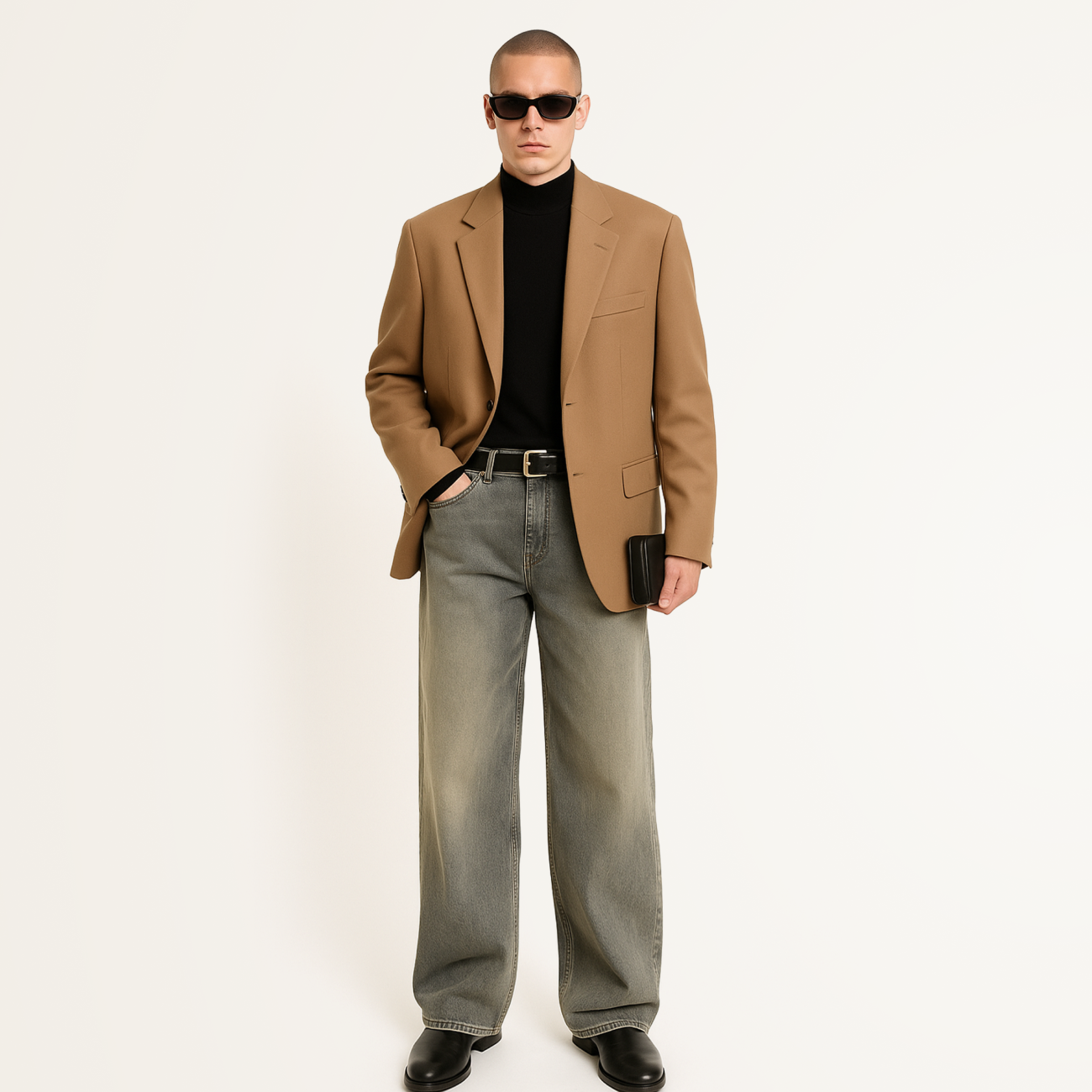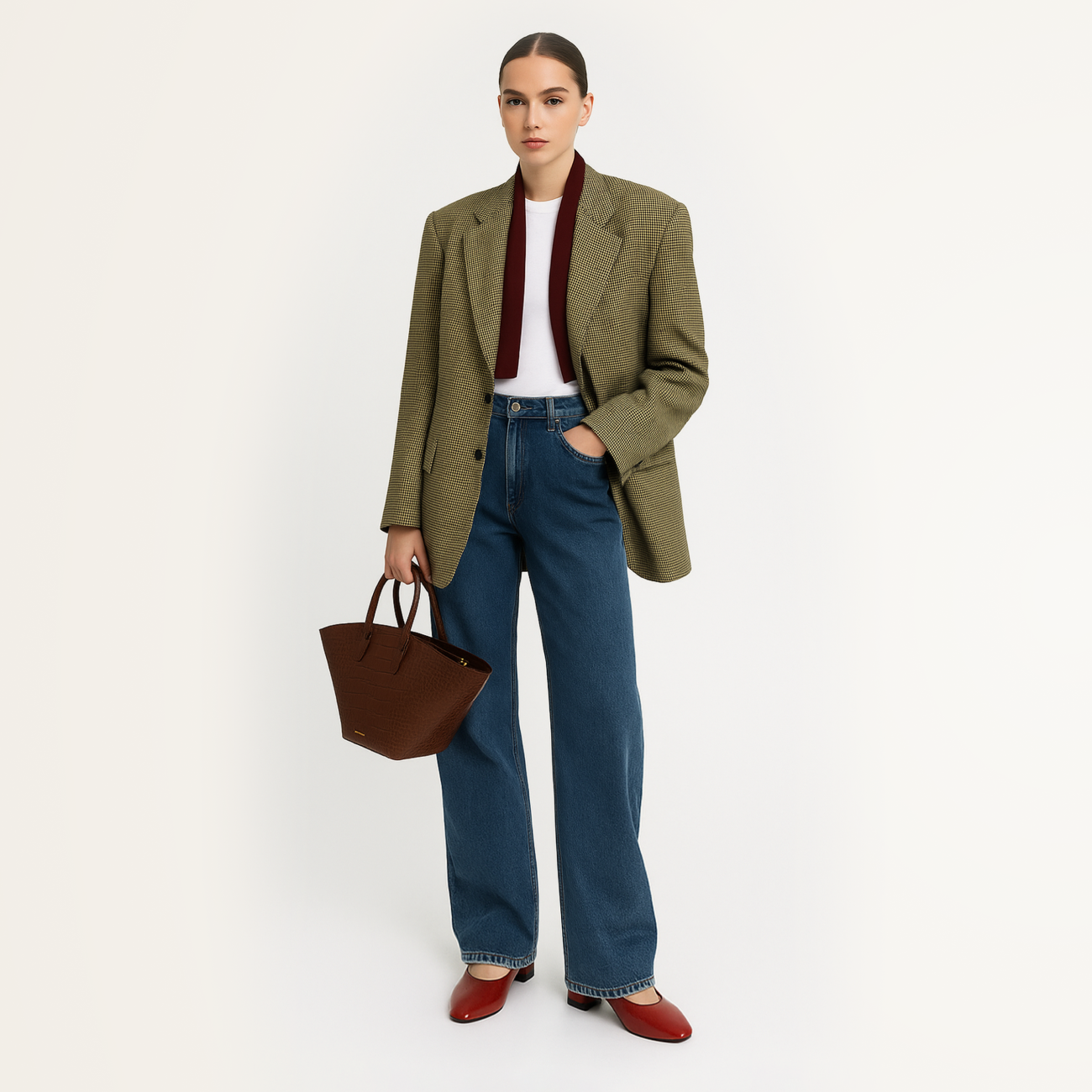Smart-casual
Smart Casual is a style for those who want to look elegant and put-together without sacrificing comfort and naturalness. It doesn’t impose strict rules, yet always carries a touch of intellect, a focus on appropriateness, and a hint of refined elegance. This style is perfect for those who value flexibility and seek to express their taste through clothing—without excessive formality.
History
The history of smart casual reflects the shifts in both the business and social worlds, where balancing comfort and elegance has become increasingly important. Its roots go back to the mid-20th century, when rigid dress codes began to soften, and society started to rethink the concept of formality in clothing.
1950s–1970s: This period saw a growing desire for less formal office attire. Economic growth and the rise of youth subcultures in America and Europe gave people the opportunity to experiment, bringing more relaxed elements into business dress. This trend was particularly strong in the U.S., where brands like Brooks Brothers and Ralph Lauren were among the first to introduce casual pieces into office wardrobes.
1980s: The corporate culture and business dress codes were at their peak, but “Casual Fridays” began to appear—days when employees were allowed to dress more casually. These Fridays laid the foundation for what would become smart casual. It was a time of experimenting with collarless shirts and looser silhouettes.
1990s: The rise of the internet and tech companies like Apple and Microsoft reshaped the idea of office attire. In IT and creative industries, formal suits began to feel overly rigid, and style shifted toward casual looks with a touch of elegance. Smart casual emerged as a compromise—allowing professionals to look polished while remaining comfortable.
2000s and today: Smart casual has become a universally accepted style, appropriate not only for the office but also for everyday life, business meetings, and social events. It blends classic elements with modern versatility, adapting to a lifestyle where flexibility and individuality take center stage.
Signature elements of the style
Color palette
Smart casual is defined by a restrained yet varied palette. Neutral colors such as grey, beige, navy, black, and white form the foundation of the wardrobe. Accents often appear in darker or muted shades—burgundy, olive, forest green, brown—and occasionally in soft pastels. A thoughtful use of color allows for refined yet expressive looks suitable for various occasions.
Prints
The style is predominantly monochrome, but subtle prints are acceptable. Checks, stripes, and light geometric patterns add character without disrupting the overall elegance. They maintain a balance between formality and comfort.
Textures
Smart casual relies on natural materials—wool, cotton, linen, and sometimes silk. These fabrics ensure comfort while adding depth to the outfit. Suede and leather are used for accessories, adding tactile richness. Common textiles include suiting fabrics, shirting cottons, denim, knitwear, and tweed.
Cuts & silhouette
The essence of smart casual tailoring is moderation. Clothing should be neither too tight nor too loose. Cuts are designed to flatter the figure while maintaining proportion. Lightly structured blazers, relaxed trousers, cropped shirts—all contribute to a look that feels effortless yet put-together.
Wardrobe essentials
- Blazer, jacket, or vest: A key element of the smart casual look.
- Chino trousers: A perfect balance between business style and comfort. These trousers are suitable for both work and informal meetings.
- Shirts and polo shirts: A classic shirt or one with a subtle pattern is often replaced with a polo in smart casual, adding a more relaxed feel.
- Jeans: An essential smart casual item. It's best to opt for dark-wash jeans without distressing or rips.
- Footwear: Leather loafers, minimalist sneakers, or oxfords work well. They add refinement without making the outfit overly formal.
- Accessories: Minimalist watches, leather belts, and simple leather briefcases or bags complete the look.
Substyles
Email: support@belt-app.com


















